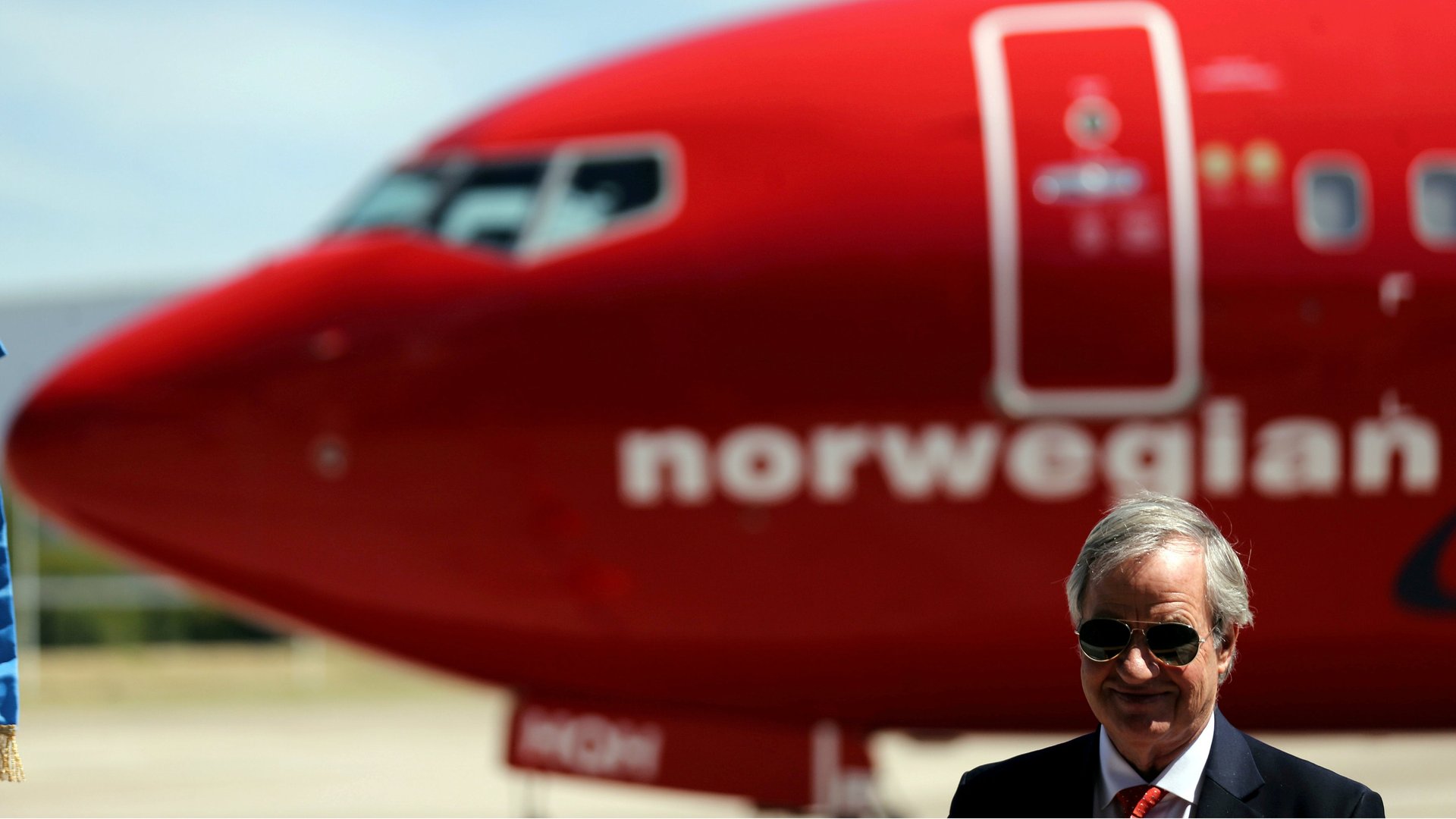Is the low-cost long-haul airline model too good to be true?
Since it launched long haul transatlantic flights in 2013, Norwegian Air has been the standard bearer of the low-cost, long-haul model. It has inspired imitators, spooked competitors, and attracted suitors who wanted in on the action.


Since it launched long haul transatlantic flights in 2013, Norwegian Air has been the standard bearer of the low-cost, long-haul model. It has inspired imitators, spooked competitors, and attracted suitors who wanted in on the action.
However, as was made clear on an unscheduled call with analysts yesterday, the business model that seemed too-good-to-be-true is looking like it’s just that. Days after IAG, the parent of British Airways, walked away (paywall) from a takeover bid, Norwegian announced that it would raise 3 billion kroner ($353 million) in a rights issue from investors. The buyers of the new shares include Norway’s richest man, shipping magnate John Fredriksen.
As part of a plan to change “its strategic focus from growth to profitability,” Norwegian will reduce spending by postponing aircraft deliveries and divesting others; optimize its base structure and scale back routes; and generally cut costs as part of an initiative with a PR-ready hashtag: #Focus2019.
The airline’s share price shed 30% on the news of the fundraising. This came just days after a more than 20% drop (paywall) following IAG ending takeover talks and announcing that it would sell its 4.6% stake in Norwegian. The airline said that it would likely record an operating loss of around 2.2 billion Norwegian kroner ($260 million) in 2018 when it reports results next month.
To be fair, Norwegian Air has been hit with several challenges out of its control over the past year. An industry-wide problem with Rolls-Royce engines that Norwegian used for its Boeing 787 Dreamliners was a costly headache, though the company said it reached a compensation deal with the manufacturer in December. In addition, their company’s chief financial officer admitted the company’s hedging position was insufficient to protect it against the increase in oil prices during the second half of last year.
That said, the company suggested that it was still interested in a takeover (or, “willing to engage in consolidation discussions,” as the jargon goes). In the meantime, it “believes that a strengthened balance sheet will increase its competitiveness and stand-alone financial strength.” (Rumors have circulated that Lufthansa and Ryanair may be interested.)
Ultimately, Norwegian’s bet that a rapid rate of growth—both in terms of passengers, routes, and aircraft acquisitions—could run ahead of costs in an industry that rife with uncertainty has not panned out. And as competitors like Primera Air and WOW Air have hit serious pockets of financial turbulence, the future of Norwegian’s business model has never looked more precarious.